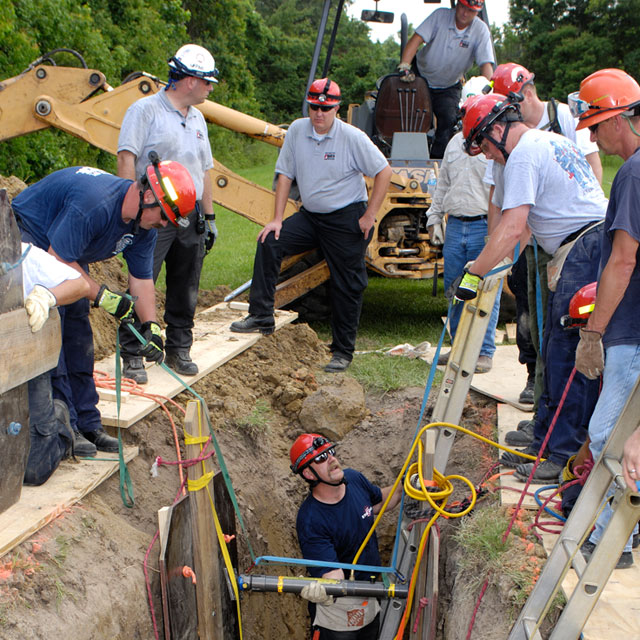Q&A: What are the Rescue Requirements for Trenches/Excavations?
![]() READER QUESTION:
READER QUESTION:
One of our readers recently asked about rescue requirements in excavations. We did some searching and found an interesting Letter of Interpretation (LOI) from OSHA that explains when rescue provisions are required during trenching operations.
ROCO TECH PANEL ANSWER:
The following is from OSHA LOI in regards to this answer. In regard to whether emergency rescue equipment is required at every trenching job site located near or passing by a gas station, refinery, gas line, sewer main, etc., please be advised by the following:
Emergency rescue equipment is required to be readily available where a competent person determines, based on the conditions at each job site, that hazardous atmospheric conditions exist or may reasonably be expected to develop during work in an excavation. In regard to whether a contractor can rely on a local rescue squad instead of providing the rescue equipment, please be advised that many emergency situations associated with the hazards involved with hazardous atmospheres in trenches would normally require an immediate response within a few minutes or even seconds. A rescue squad would be unable to provide the necessary response and therefore could not be used to comply with 1926.651(g)(2).

As more and more industrial sites realize that just about every day, somewhere on their property, there is an open trench. Trench collapses cause dozens of fatalities and hundreds of injuries each year. Obviously, this creates concerns, especially for the rescue personnel who may be called to the scene during an emergency.
We’ve been getting questions from clients that have effective rescue teams for medical, hazmat, fire, confined space and rope but are realizing that they are lacking if a trench collapse occurs on their site. “Who will do the rescue?” is a question often asked. There is concern by supervisors, who have been given the responsibility for signing trench permits, but have not had adequate training in trench and excavations. Many are not “competent persons” as referenced in OSHA1926.651-652.
After looking at the dozen of questions in the referenced LOI, it should raise a few more:
- Are the people you have signing off that a trench is constructed properly and safe for entry, trained to know what to look for and have the authority to act (competent person), or are they assuming that the contractor is “doing the right thing”?
- Who will be called if a trench emergency should occur?
- Are their local resources that have the training and equipment to respond, or are you an island unto yourself when it comes to trench rescue?
The link to the referenced LOI is shown below – and the questions are still very relevant : https://www.osha.gov/pls/oshaweb/owadisp.show_document?p_table=INTERPRETATIONS&p_id=20597
Additional Resources:
OSHA Trenching and Excavation Safety
Trench Safety Poster – An Unprotected Trench Is An Early Grave




